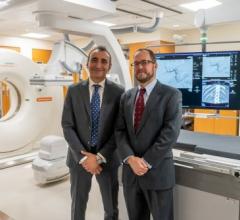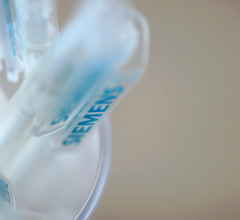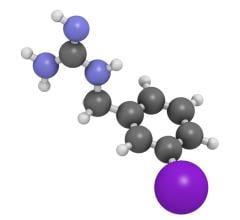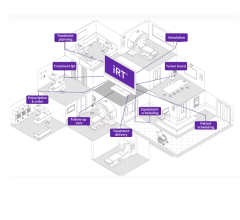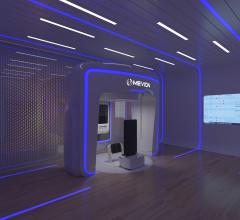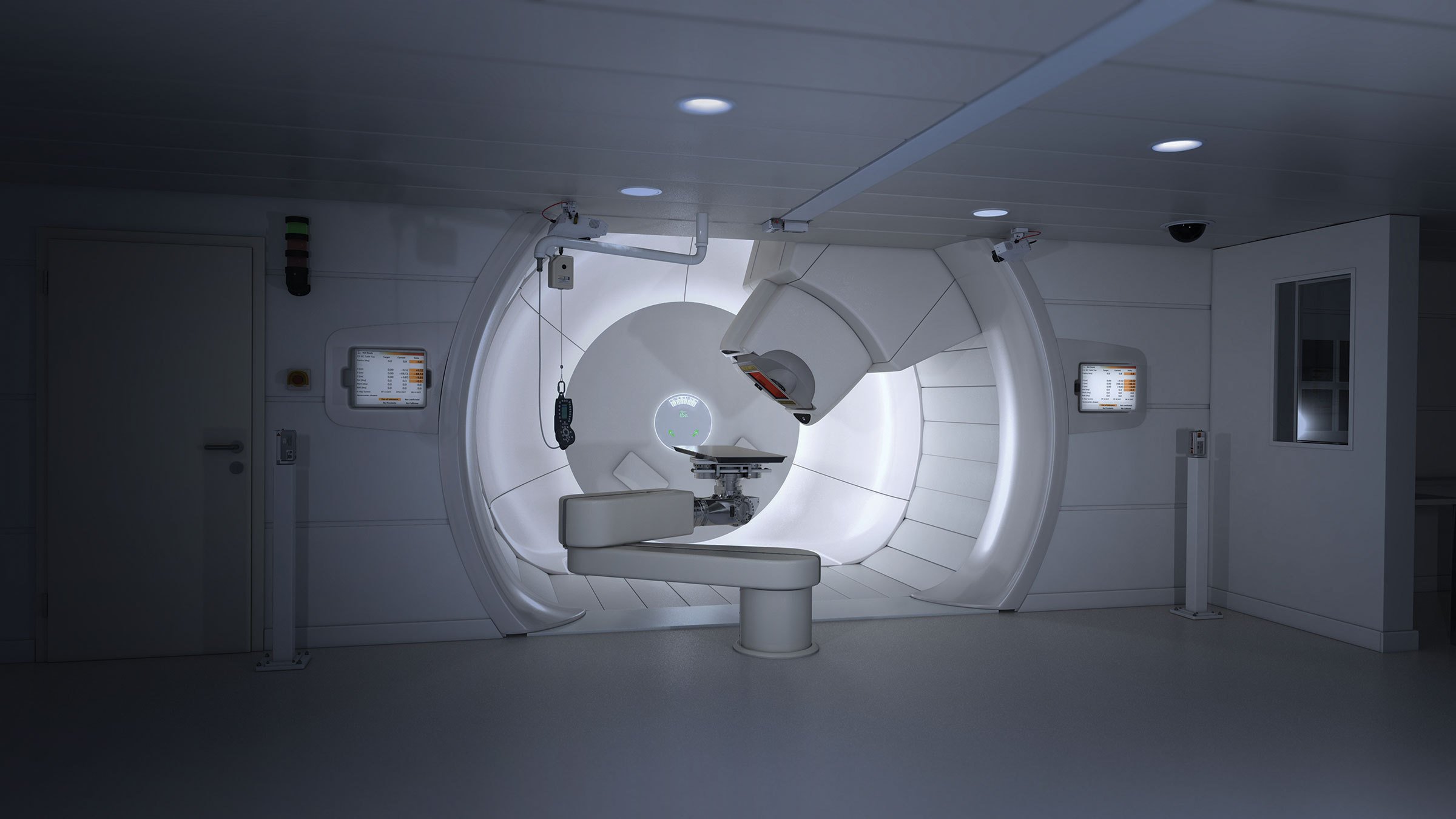
Low four-year rates of gastrointestinal (13.6 percent) and urologic issues (7.6 percent) suggest hypofractionated proton therapy as an alternative to traditional radiotherapy to reduce toxicity.
Radiation therapy is an important tool in the clinician’s armamentarium for treatment of localized, early-stage prostate cancer. According to the Prostate Cancer Foundation, more than 60,000 American men opt for radiation annually.1 One of the key concerns with prostate radiotherapy, however, is limiting toxicity to important surrounding organs and other structures, including the bladder, rectum and heads of the femur, as well as normal tissue. But technology and technique advances in radiotherapy are allowing radiation oncologists to more precisely sculpt the radiation dose to maximize impact to the tumor while protecting surrounding tissue.
Brachytherapy
Brachytherapy delivers therapeutic dose directly to the tumor via an implanted radiation source that is either permanently or temporarily inserted in the region of interest. Permanent brachytherapy is also known as high dose rate (HDR) brachytherapy because it delivers a larger dose of radiation over a shorter period of time compared to temporary or low dose rate (LDR) brachytherapy.
Radiation therapy guidelines from professional societies have long included brachytherapy as a recommended option for certain prostate cancer cases. It can be used alone or as a boost treatment following external beam radiation therapy (EBRT). The latter option is typically employed for intermediate- or high-risk prostate cancer cases because of the extra radiation the patient receives. But questions remain about increased toxicity from combining the two treatment types.
A group of researchers led by Deborah W. Bruner, RN, Ph.D., FANN, who is the senior vice president for research at Emory University, used a cohort of nearly 600 patients to evaluate the differences between progression-free survival and patient-reported outcomes (PROs) for toxicity for brachytherapy alone versus brachytherapy plus EBRT.
Patients were observed at 4 and 24 months post-treatment; the research team focused on PROs for bowel, urinary and sexual domains. Progression-free survival was found to be similar between the two arms, but the EBRT + B patients reported more late grade 3 or later bladder/genitourinary toxicities (34 percent vs 23 percent).2 Interestingly, clinicians reported only single-digit percentage occurrences for each group, significantly lower than the PROs.
“The patient-reported data confirms that brachytherapy alone is the superior treatment for this for men with intermediate-risk prostate cancer, with less patient-reported side effects. Brachytherapy alone would also be the most cost-efficient treatment option for patients,” stated Bruner.
Proton Therapy and Hypofractionation
A separate study from Penn Medicine at the University of Pennsylvania explored the possibilities of combining proton therapy, an advanced radiotherapy technique that has been growing rapidly in recent years, with hypofractionation to safely maximize dose to the tumor.
In hypofractionation, the prescribed radiation dose is delivered in larger portions (fractions) over fewer treatment sessions than in traditional radiotherapy. Hypofractionation has been demonstrated in numerous clinical studies to offer similar disease control to traditional fractionation while shortening the amount of time the patient is in therapy.
A trio of professional societies released a new evidence-based guideline last October promoting hypofractionated radiation therapy for localized prostate cancer. The joint document — from the American Society of Clinical Oncology (ASCO), American Society of Radiation Oncology (ASTRO) and the American Urological Association (AUA) — provides recommendations for what the writing group calls “moderate hypofractionation” and “ultrahypofractionation.” Moderate hypofractionation is loosely defined as EBRT with a fraction size between 240 and 340 cGy, and ultrahypofractionation is designated by a fraction size greater than or equal to 500 cGy.3
“Conclusive evidence from several large, well-designed randomized trials now confirms that dose escalation can almost universally benefit men with early-stage prostate cancer who choose to manage their disease with external radiation,” said Howard Sandler, M.D., FASTRO, FASCO, chair and professor of radiation oncology at Cedars-Sinai Medical Center and co-chair of the guideline panel. “Significant advances in treatment planning and delivery have enabled oncologists to deliver more powerful, life-saving doses of radiation in fewer visits and without compromising quality of life.”
Most of these studies, however, have used hypofractionation with photon radiation and its potential with proton therapy has gone largely unexplored. Proton therapy targets cancer with a tighter radiation beam, limiting the damage to surrounding healthy tissue. Unlike traditional photon radiation that travels through the target and comes out the other side, proton beams can be programmed to stop inside the tumor without harming healthy tissue.
The Penn Medicine study looked at data on 184 men who received hypofractionated proton therapy for localized prostate cancer. Approximately four years post-treatment, 96 percent of the study cohort were still alive, and the four-year rate of serious gastrointestinal problems was 13.6 percent; the researchers noted that most of those problems occurred within the first two years after treatment. Of the patients who had GI effects, 79 percent experienced rectal bleeding. The cumulative four-year rate of urologic issue was 7.6 percent. The most common issue was needing to urinate frequently.
All issues resolved within six months.4
“This study provides some prospective evidence that the higher daily radiation dose delivered in hypofractionated proton therapy does not negatively impact patient quality of life,” said senior author Neha Vapiwala, M.D., an associate professor of radiation oncology. “This data can help guide clinicians and patients as they weigh treatment efficacy, tolerability and convenience.”
Image-guided Radiotherapy
Intensity modulated radiation therapy (IMRT) has risen to become the gold standard for external beam radiation therapy in prostate cancer. The technique allows the radiation beams to be conformed more precisely to the target volume, and the intensity of each individual beam can be modulated for more precise dose sculpting. As one might suspect, this requires a high level of precise planning in order to successfully deliver therapeutic dose to the target volume. Consequently, image guidance is a crucial partner to radiation delivery to assess treatment planning and response. The advent of image-guided radiation therapy (IGRT) in recent years, particularly magnetic resonance (MR)-guided radiotherapy, combines both functions into one system, and recent results from the first prospective trial of the technology with localized prostate cancer show promise.
ViewRay, which received U.S. Food and Drug Administration (FDA) clearance for the first MRgRT system in 2012, announced the findings of a 101-patient study at Amsterdam University Medical Center using MRIdian with intermediate- and high-risk prostate cancer patients, assessing GI and GU toxicity effects. At three months, no early grade 3 GU or GI toxicity — according to CTCAE (Common Terminology Criteria for Adverse Events) v4.0, a National Cancer Institute method for evaluating the effects of cancer therapy drugs — was observed. More impressively, the maximum cumulative grade 2 early GU and GI toxicity measured by any symptom at any study time point was 23.8 percent (study hypothesis 40 percent) and 5 percent (study hypothesis 15 percent).5
“SBRT [stereotactic body radiation therapy] offers significant promise in the treatment of prostate cancer. Our clinical trial takes that a step further in showcasing its value in patients with intermediate- and high-risk disease, with a focus on evaluating associated toxicities and quality of life outcomes,” said principal investigator Anna Bruynzeel, M.D., Ph.D., radiation oncologist at Amsterdam UMC. “We see a lower incidence of GI and GU toxicity with MR-guidance as compared to similar SBRT prostate cancer studies. The results reinforce the value of MRIdian’s real-time on-table adaptive treatment with automatic beam gating for prostate patients.”
References
1. Worthington J.F. Treatment for Prostate Cancer: External-Beam Radiation Therapy. Prostate Cancer Foundation, https://www.pcf.org/c/treatment-for-prostate-cancer-external-beam-radiation-therapy/. Accessed Sept. 9, 2019.
2. Bruner D.W., Moughan J., Prestidge B.R., et al. Patient Reported Outcomes of NRG Oncology/RTOG 0232: A Phase III Study Comparing Combined External Beam Radiation and Transperineal Interstitial Permanent Brachytherapy with Brachytherapy Alone in Intermediate Risk Prostate Cancer. Abstract presented at the annual meeting of the American Society for Radiation Oncology (ASTRO).
3. Morgan S.C., Hoffman K., Loblaw D.A., et al. Hypofractionated Radiation Therapy for Localized Prostate Cancer: An ASTRO, ASCO, and AUA Evidence-Based Guideline. Journal of Clinical Oncology, published online Oct. 11, 2018. DOI: 10.1200/JCO.18.01097
4. Grewal A.S., Schonewolf C., Min E.J., et al. Four-Year Outcomes From a Prospective Phase II Clinical Trial of Moderately Hypofractionated Proton Therapy for Localized Prostate Cancer. International Journal of Radiation Oncology, Biology, Physics, June 11, 2019. https://doi.org/10.1016/j.ijrobp.2019.05.069. Accessed Sept. 9, 2019.
5. Bruynzeel A.M.E., Tetar S.U., Oei S.S., et al. A prospective single-arm phase II study of stereotactic magnetic-resonance-guided adaptive radiotherapy for prostate cancer: Early toxicity results. International Journal of Radiation Oncology Biology Physics, published online Aug. 13, 2019. https://doi.org/10.1016/j.ijrobp.2019.08.007. Accessed Sept. 9, 2019.


 December 04, 2025
December 04, 2025 
